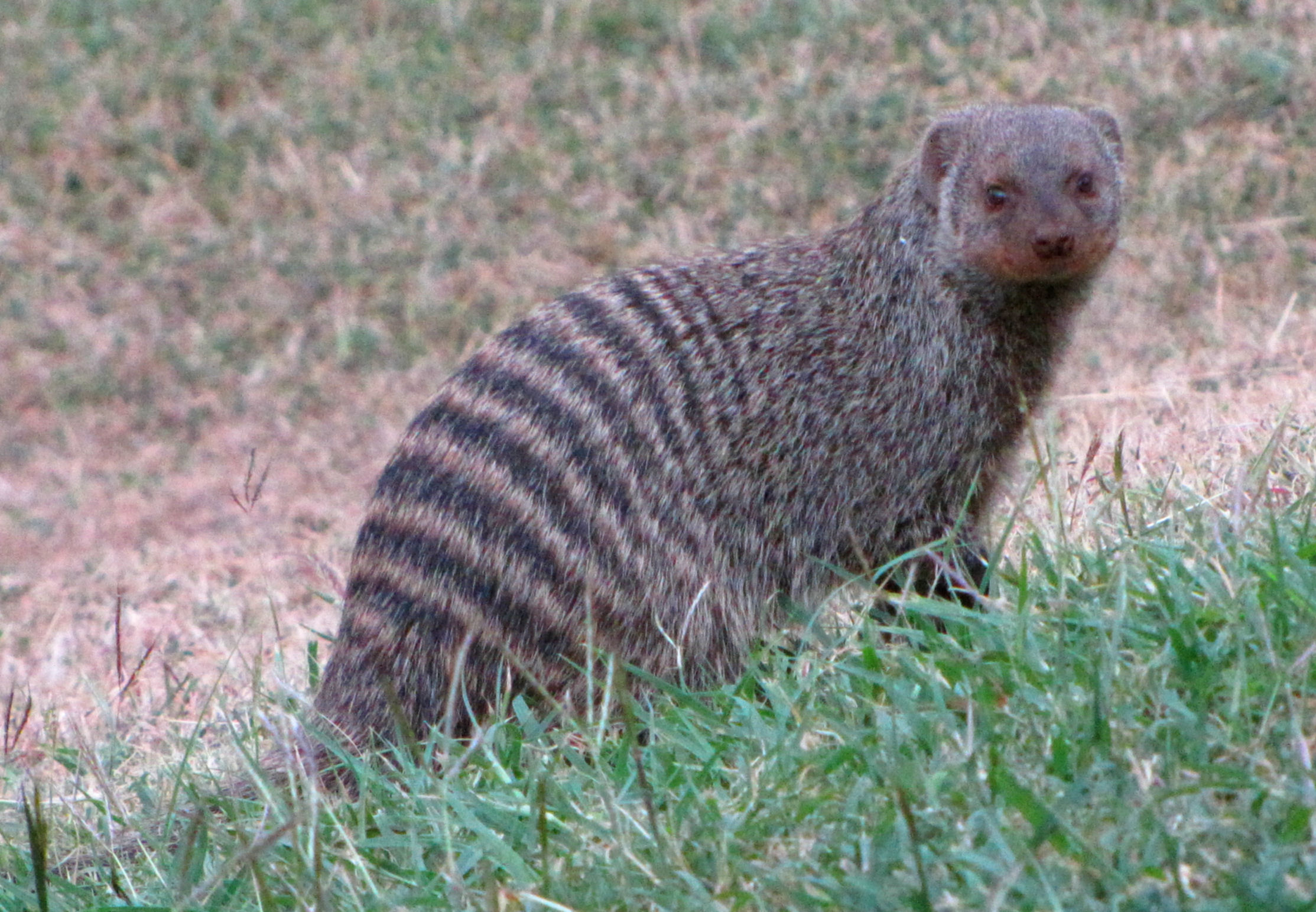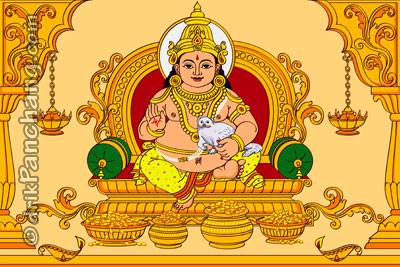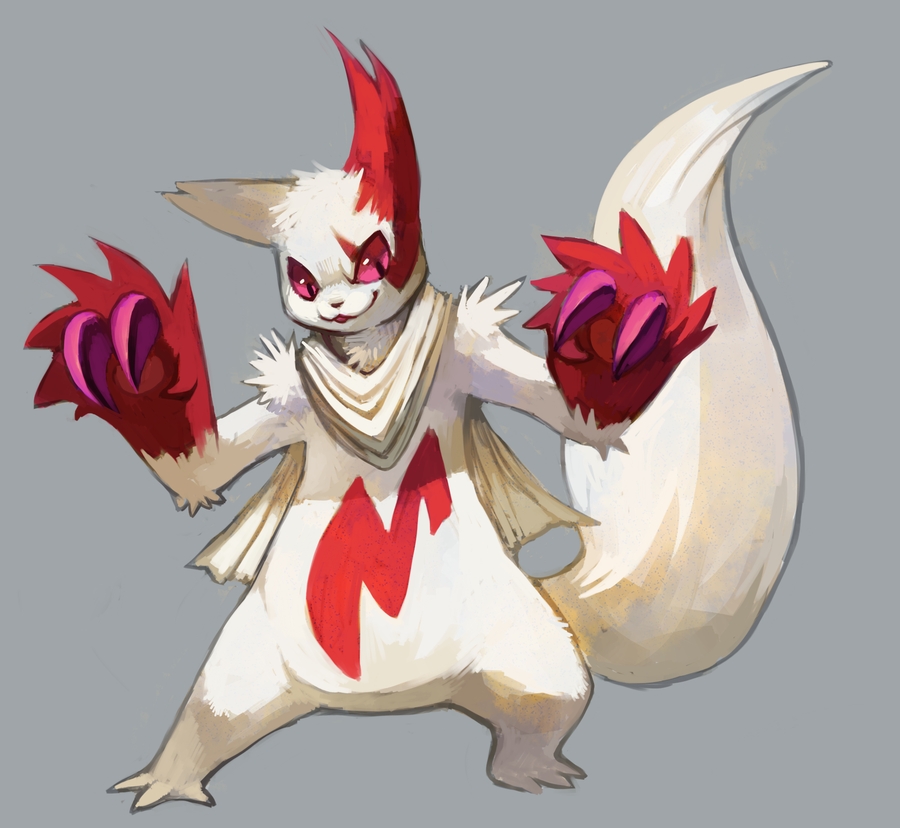The word “mongoose” is derived from the Marathi name mungūs (मुंगूस) (pronounced as [muŋɡuːs]). The form of the English name (since 1698) was altered to its “-goose” ending by folk-etymology. It has no etymological connection with the word goose. Historically, it has also been spelled “mungoose”.The plural form is mongooses, or, rarely, mongeese.
Traditionally they are believed to be a natural enemy of snakes. Banded mongooses were introduced to the Caribbean and Hawaiian islands in the 19th century to control rat and snake populations but instead caused many bird species to go extinct.

Banded Mongoose
Egyptians venerated native mongooses (Herpestes ichneumon) for their ability to handle venomous snakes and for their occasional diet of crocodile eggs.[citation needed]
The Buddhist god of wealth Vaiśravaṇa, or Dzambala for Tibetans, is frequently depicted holding a mongoose that is spitting jewels from its mouth.

The Buddhist God of Wealth
The Hindu god of wealth, Kubera (being the son of Vishrava (“Fame”), Kubera is also called Vaisravana), is often portrayed holding a mongoose in his left hand, hence the sight of a mongoose is considered lucky by some.

The Hindu God of wealth Kubera
A well-known fictional mongoose is Rikki-Tikki-Tavi, which appears in a short story of the same title in The Jungle Book (1894) by Rudyard Kipling. In this tale set in India, the young mongoose saves his family from a krait and from Nag and Nagaina, two cobras. The story was later made into several films, and also a song by Donovan, among other references.


A mongoose also features in Bram Stoker’s novel, The Lair of the White Worm. The main character, Adam Salton, purchases one to independently hunt snakes. Game Freak’s Pokémon franchise has a Pokémon named Zangoose that is based on and named after the mongoose.

The mongoose is a prohibited animal in the United States (with the exception of Hawaii). However, an exception was made in the 1963 case of “Mr. Magoo”, a mongoose brought to the Minnesota port of Duluth by a merchant seaman. Mr. Magoo, as the animal was to become known, faced being euthanized, but a public campaign resulted in the intervention of Secretary of the Interior Stewart Udall, who exempted Magoo from the regulations. Magoo lived out his days on display as the most popular attraction of the Duluth Zoo, dying of old age in 1968.
